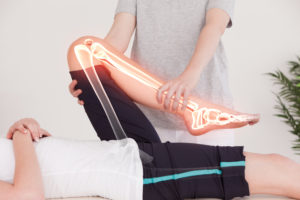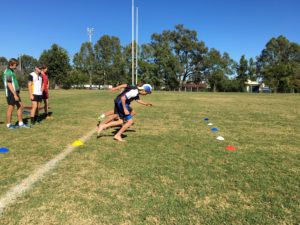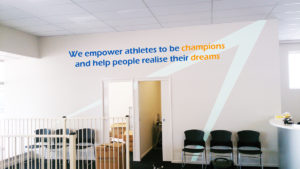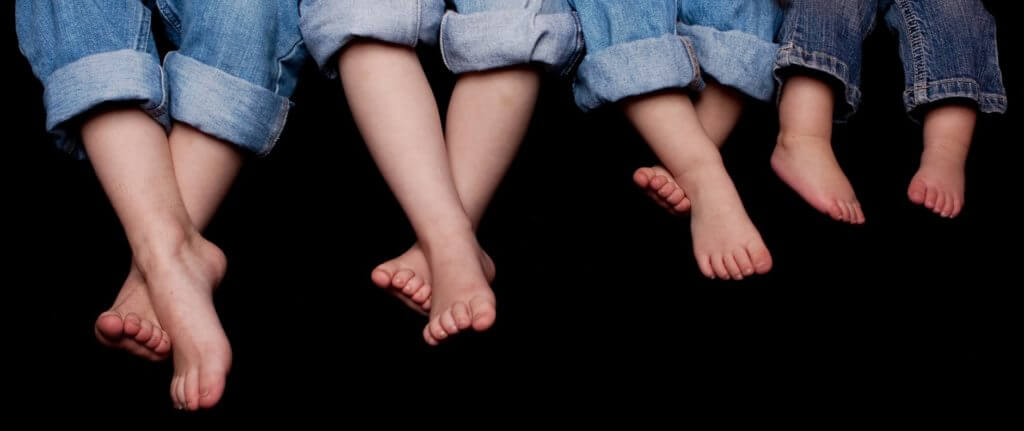What is Severs’?
 Severs’ disease is related to growth in children and adolescents. It is caused by irritation to the growth plate in the heel bone (Calcaneus). This happens because there has been too much force or traction through the Achilles Tendon (which joins your calf muscle to your heel bone).
Severs’ disease is related to growth in children and adolescents. It is caused by irritation to the growth plate in the heel bone (Calcaneus). This happens because there has been too much force or traction through the Achilles Tendon (which joins your calf muscle to your heel bone).
Symptoms
I have provided a list of the commonly found symptoms that we find and from some of the reading we have done:
- Heel pain – especially after getting up in the morning, at beginning and end of activity or sports.
- Pain at the back of the heel – more into the point where the achilles starts to insert into the heel bone.
Why?
 During periods of growth, the long bones in the body, such as the Tibia and Fibula (shin bones) grow rapidly, but the muscles do not necessarily “grow”. They stretch. So, a bone grows, muscle stretches, and the tendon is put on stretch already. Then, if you are active and run and jump repeatedly, the tendon attachment to the bone gets very stressed, and starts to pull on the attachment site, which is effectively the growth plate.
During periods of growth, the long bones in the body, such as the Tibia and Fibula (shin bones) grow rapidly, but the muscles do not necessarily “grow”. They stretch. So, a bone grows, muscle stretches, and the tendon is put on stretch already. Then, if you are active and run and jump repeatedly, the tendon attachment to the bone gets very stressed, and starts to pull on the attachment site, which is effectively the growth plate.
You can think of pain in this situation at first as a very effective warning sign to back off activity.
There is no better explanation, and its sometimes hard to know who will be affected with the problem. We see numerous times in families, one child will have a bad case and the other child will not. The type of sport and the amount of sport definitely plays a part in how bad the symptoms feel though in our experience.
What should I do if my child has heel pain?
- Rest – decrease activity by between 25-100% depending on how severe the pain is. We recommend trialling this for 2-5 days first, so that you can see what the result of this strategy is.
- In the meantime whilst resting – seeing Physiotherapy – A physio can diagnose the problem but also start to fix the problem. Strategies such as soft tissue release, stretching, putting a wedge or a bit of foam to elevate the heel in the shoe, which deloads the achilles tendon can help.
- If severe and there are some issues with foot mechanics, then sometimes a referral to a podiatrist is required to custom-make an orthotic to provide more significant support. For some children, this can make a big difference.
- Modify activities – sometimes, including lower impact sports, such as swimming, cycling, rowing can help decrease the total running load on an athlete. This is something that an experienced Physiotherapist, or Strength and Conditioning or Performance Coach can help you with.
What do I do if my child does not want to rest?
 This is probably the most common question or problem we have over years. Some people say that children and teenagers will just “work it out” and if it hurts they will find a way around it, or just not do it.
This is probably the most common question or problem we have over years. Some people say that children and teenagers will just “work it out” and if it hurts they will find a way around it, or just not do it.
This is somewhat correct. But, what we aim to teach children and teenagers is to find options where they can still have fun, work hard and feel like they are getting somewhere . Sometimes education can be just as effective as providing treatments that are short term in nature and short term in effect.
There is no easy answer, however from experience sometimes its easier to have the decisions in the hands of an appropriate health professional, so that as a parent, you have an “expert” opinion provide guidelines and the why, rather than trying to enforce rest to a very active young athlete.
Contacting Vector Health
You can contact Hamish Ashton, Senior Physiotherapist, or Glenn Hansen, Head Performance Coach to talk about your child or teenage athlete and help to get a plan together to manage their heel pain on 4927 8190 or through emailing glenn@vectorhealth.stagingarea.net

